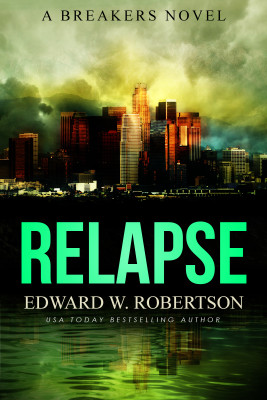One prominent story making the rounds right now is how an author with an Amazon bestseller only made $12,000 off it. In fact, on Salon, the article’s headline is “My Amazon bestseller made me no money.” The takeaway seems to be that there’s no money in writing. As the author Patrick Wensink writes, “There’s a reason most writers have bad teeth. It’s not because we’ve chosen a life of poverty. It’s that poverty has chosen our profession.”
The actual details are a bit scant, but apparently the novel hit #6 on Amazon, selling about 4000 copies. I’m not sure what timespan that’s over–he says it was high on the bestseller list for a week, but it’s possible that 4000 figure is for sales across that month (July 2012), or maybe even all last year. Knowing the actual timespan would help break things down, but it doesn’t matter a whole lot; whatever the case, the bulk of those sales came over that bestselling week.
So let’s contextualize things.
First off, for a book to reach #6 in the Kindle store, it’s got to sell something like 4000 copies in a day. So I assume he’s talking about paperback sales. With this information, let’s rephrase what happened.
He made $12,000. In one week. With one book. Just on Amazon. Just for sales of his paperback.
Now, it’s possible this was for combined print and Kindle sales–details aren’t provided–but if his print version was what hit #6 on the bestseller list, his Kindle sales can’t have been much. May not make intuitive sense, but sales of one version do not guarantee sales of all versions. For instance, two of my books have so far sold a combined 2000 Kindle copies on Amazon this month. Their Amazon print sales? 0. So I don’t know exactly how many of his 4000 sales were for the print version–could be 3000, could be 3900–but anyway, it doesn’t much matter.
Because, again, he made $12,000 in one week for one book on one store on sales that were mostly of one format.
Put another way, if this book had maintained that rank for a year, its Amazon-only, mostly-print royalties to the author would be over $600,000.
In fairness, it’s really, really hard for any book to cling to the #6 rank for an entire year. That’s Harry Potter, Hunger Games, 50 Shades territory. Only one book in thousands has that kind of staying power. But this is just another way to think about what that $12,000 means.
For more context, more than 50% of Amazon’s book sales are for Kindle. If the book had been able to reach as many Kindle readers as paperback readers, its week of sales would have meant more like $20-24,000 in royalties. I’m not sure what percentage of print sales Amazon commands, but the consensus is it’s got about 60% of the ebook market. If you want to give Amazon the extremely generous figure of 50% of total book sales, and you look at what this book would have earned if it had sold equally well in all other outlets, those royalties would be in the $40,000 – 50,000 range.
A decent year’s salary, for a week of sales, on a single book.
Again, this is just a thought experiment. And a manipulative one. The reality is that only those huge bestsellers tend to do well in every market and format. I think most books that sell okay look much more like Wensink’s book–sales are limited mostly to one market and format. Just because the potential’s there doesn’t mean you can reach it.
But the apparent takeaway of this Salon article is that writing is such a poor way to make a living that even writing a bestseller is no guarantee of a year’s living wage, let alone a career. I don’t disagree that it’s very difficult to make a living at this. The Taleist survey of self-publishing–which was almost certainly skewed in favor of successes–showed that 50% of indie authors made less than $500 a year. Meanwhile, the Salon article mentions an advance for a traditionally-published book being just $5000, which is pretty common these days. Not exactly enough to live on.
But I think there are some bigger takeaways here: that unless you’re Harper Lee, you can’t make a career out of a single book. That seems to be a persistent myth among writers. One that sets a lot of us up for disappointment. One that leads us to believe the numbers never work out no matter how many books we write. I think that myth needs to die.
I also think this says something about what it means to be a “bestseller”–specifically, not much. “#6 on Amazon” sounds amazing, but let’s reframe things again. To sell 4000 copies a year on the Kindle side (which I’m much more familiar with than print), you don’t need to come anywhere near #6. All you need to do is maintain a steady rank of #10,000.
Not nearly as easy as it may sound, especially with a single book, but “#10,000” sounds pathetic compared to “A top ten Amazon bestseller.” Few books–six, as it turns out–are #6 or better at any given moment. Impossible odds. Making #10,000, though? That sounds like it could be achievable.
And that, I think, is the real takeaway here. One way to frame Wensink’s story is “Wow, he was a bestseller on the biggest bookstore in the world–and he didn’t even make minimum wage.”
I hear it, and I think, “Wow, this guy made twelve thousand dollars in a single week with a single book. I’ll probably never be able to put up numbers like that–but to make a career, I don’t have to.”









Leave a Reply to Ed Robertson Cancel reply